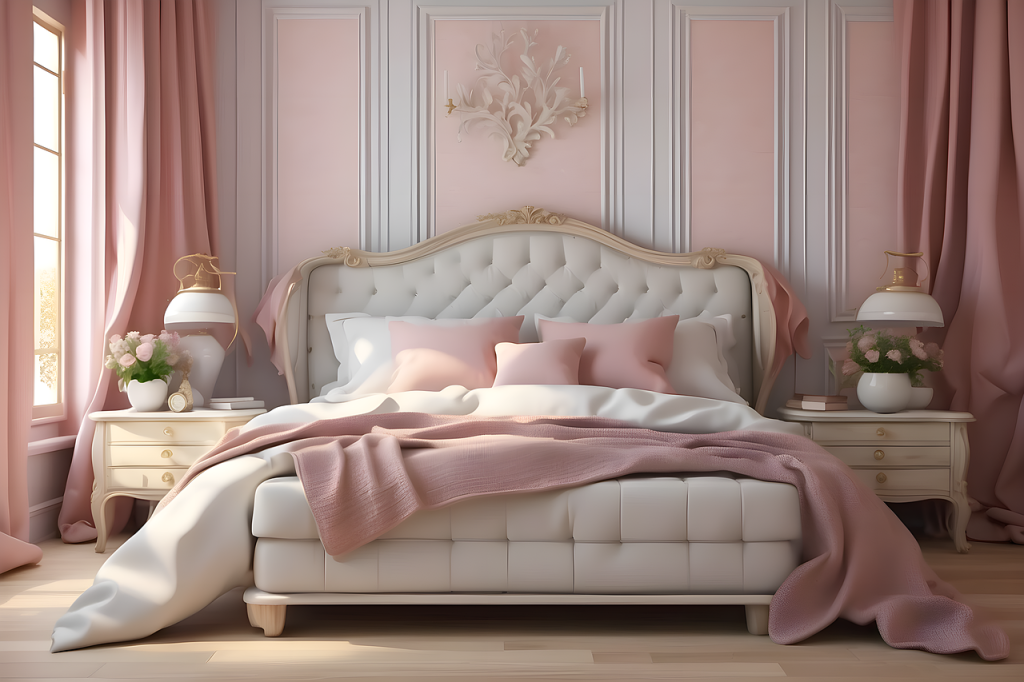
Selecting the right bed sheets for every season can significantly impact your comfort and sleep quality. With the variety of materials, weaves, and thread counts available, finding the perfect sheets to suit different weather conditions might seem daunting. This guide will help you navigate through the options and make informed decisions to ensure year-round comfort in your bedroom.
Understanding Bed Sheet Materials
The first step in choosing the best bed sheets for any season is understanding the materials. Here’s a breakdown of common fabrics and their seasonal suitability:
- Cotton:
- Egyptian Cotton: Known for its long fibers, Egyptian cotton is soft, durable, and breathable. It’s a versatile option suitable for both summer and winter.
- Pima Cotton: Similar to Egyptian cotton, Pima is also soft and durable but generally more affordable. It’s another good all-season choice.
- Percale Weave: This plain weave is crisp and cool, making it ideal for hot summer nights.
- Sateen Weave: Sateen is smoother and warmer, suitable for cooler weather.
- Linen:
- Linen is highly breathable and moisture-wicking, perfect for hot and humid summer nights. It has a relaxed, rustic look and becomes softer with each wash.
- Bamboo:
- Bamboo sheets are known for their excellent moisture-wicking properties and softness. They’re great for summer due to their cooling effect but can also be used year-round.
- Flannel:
- Flannel is a winter favorite due to its brushed surface, which provides extra warmth and softness. It’s perfect for keeping you cozy during cold nights.
- Microfiber:
- Made from finely woven synthetic fibers, microfiber is soft and affordable. It’s better suited for cooler seasons as it tends to trap heat.
- Silk:
- Silk sheets are luxurious and naturally temperature-regulating, making them suitable for both summer and winter. They’re hypoallergenic and beneficial for skin and hair.
Seasonal Recommendations
Spring
Spring is a time of renewal, and your bedding should reflect the changing temperatures. Here are some materials that work well in the spring:
- Percale Cotton: Lightweight and breathable, percale cotton sheets help regulate body temperature during fluctuating spring nights.
- Bamboo: With its natural moisture-wicking properties, bamboo keeps you dry and comfortable as the humidity starts to rise.
- Linen: Linen sheets are breathable and perfect for the slightly warmer spring nights, providing a cool, crisp feel.
Thread Count: For spring, a thread count between 200-400 in cotton or bamboo sheets ensures a balance of softness and breathability.
Summer
Summer calls for light, breathable, and moisture-wicking sheets to combat the heat and humidity. Consider the following materials:
- Linen: Linen sheets are incredibly breathable and perfect for hot summer nights. They wick away moisture and improve with each wash.
- Bamboo: Bamboo’s cooling properties make it ideal for summer. These sheets are soft, breathable, and moisture-wicking.
- Percale Cotton: The crisp and cool nature of percale cotton makes it a great summer choice, providing a refreshing sleep environment.
Thread Count: A thread count of 200-300 in percale cotton or bamboo is ideal for maximum breathability.
Fall
As temperatures begin to drop, it’s time to switch to slightly warmer sheets. Here are some fall-friendly materials:
- Sateen Cotton: Sateen sheets are smoother and warmer than percale, making them a good transition option for fall.
- Pima Cotton: Known for its softness and durability, Pima cotton provides the right amount of warmth for cool autumn nights.
- Flannel: If you tend to feel cold easily, lightweight flannel sheets can be introduced in the early fall for added warmth.
Thread Count: A thread count of 300-600 in sateen or Pima cotton offers a balance of warmth and comfort.
Winter
Winter demands the coziest, warmest sheets to keep the cold at bay. The following materials are perfect for those chilly nights:
- Flannel: Flannel sheets are a winter staple. Their brushed surface provides extra warmth and softness.
- Microfiber: Soft and warm, microfiber sheets are budget-friendly and great for trapping heat.
- Sateen Cotton: For those who prefer cotton, sateen sheets offer a warmer alternative to percale with a silky feel.
- Silk: If you prefer a touch of luxury, silk’s natural insulation properties make it suitable for winter.
Thread Count: A thread count of 400-800 in sateen or higher GSM (grams per square meter) in flannel ensures maximum warmth and coziness.
Weave and Thread Count
The weave and thread count of your bed sheets also play a crucial role in their suitability for different seasons. Here’s a quick guide:
- Percale: A plain weave that feels crisp and cool. It’s perfect for summer and spring.
- Sateen: A satin weave that’s smoother and warmer, ideal for fall and winter.
- Flannel: A brushed weave that provides exceptional warmth, making it a winter favorite.
Thread count refers to the number of threads per square inch of fabric. While higher thread counts often indicate softer sheets, they can also trap more heat. Here’s how to choose:
- 200-300: Lightweight and breathable, ideal for summer and spring.
- 300-600: Offers a balance of softness and warmth, suitable for fall.
- 400-800: Denser and warmer, perfect for winter.
Tips for Maintaining Your Bed Sheets
To ensure your sheets remain comfortable and durable throughout the seasons, proper care is essential. Here are some maintenance tips:
- Wash Regularly: Wash your sheets every one to two weeks to keep them fresh and hygienic.
- Follow Care Instructions: Always check the manufacturer’s care label for specific washing and drying instructions.
- Avoid Overloading: Don’t overload the washing machine to prevent damage to the fibers.
- Use Gentle Detergents: Harsh detergents can weaken the fibers and reduce the lifespan of your sheets. Use mild, hypoallergenic detergents instead.
- Rotate Your Sheets: Have at least two sets of sheets for each season and rotate them regularly to extend their lifespan.
Choosing the Right Colours and Patterns
While comfort and practicality are paramount, the aesthetic appeal of your bed sheets shouldn’t be overlooked. Different colors and patterns can affect the ambiance of your bedroom and your overall mood. Here’s how to choose:
- Spring: Opt for light, pastel colors and floral patterns that reflect the season’s fresh and rejuvenating vibe.
- Summer: Bright, vibrant colors and fun patterns can energize your space. Whites and light blues can also enhance a cool, airy feel.
- Fall: Warm, earthy tones like deep reds, oranges, and browns create a cozy and inviting atmosphere.
- Winter: Rich, dark colors like navy, burgundy, and forest green can add warmth and sophistication to your bedroom.
Conclusion: Creating a Year-Round Bedding Strategy
Choosing the best bed sheets for every season requires a thoughtful approach, considering materials, weaves, thread counts, and even colors and patterns. By tailoring your bedding to the changing temperatures and your personal preferences, you can create a comfortable and inviting sleep environment all year long.
- Invest in Versatile Sheets: Sheets like Egyptian cotton and bamboo are versatile enough to be used year-round, making them great investment pieces.
- Seasonal Rotation: Have specific sets of sheets for each season and rotate them accordingly to maximize comfort and longevity.
- Layering: Use layering techniques with blankets and comforters to adjust warmth levels without having to switch sheets constantly.
With this ultimate guide, you’re now equipped to choose the best bed sheets for every season, ensuring a restful and comfortable sleep experience no matter the weather. Sweet dreams!
